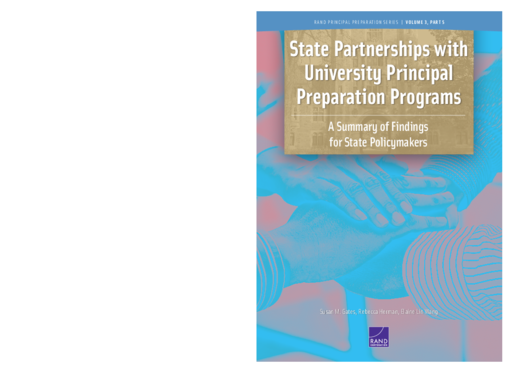- Author(s)
- Susan M. Gates, Rebecca Herman, and Elaine Lin Wang
- Publisher(s)
- RAND Corporation
- DOI Link
- https://doi.org/10.7249/RRA413-7
Research Approach
For the study from which this report is drawn, the researchers completed more than 630 interviews, focus groups, and observations from 2017 to 2021 across the seven sites that took part in the University Principal Preparation Initiative (UPPI)—e.g., with participants from the university programs, district partners, state partners, and mentor programs. The researchers also administered the University Council for Educational Administration’s Initiative for Systemic Program Improvement through Research in Educational (INSPIRE) Leadership survey to participating university programs and seven within-state comparison universities not participating in UPPI; the director of the program (or their designee) reported on program features in spring 2019 and spring 2021. Program graduates reported on their experiences in spring 2019, but follow-up interviews were precluded by the coronavirus disease 2019 (COVID-19) pandemic.
For more information on this research, please see, among others, the full report on which this report is based (Herman, Woo, et al., 2022) and two prior reports on UPPI (Wang et al., 2018; Gates et al., 2020).
The researchers recognize that their analysis has limitations. Although they note changes and improvements in all of the UPPI programs, not all redesigned programs might be equally effective. Neither the foundational research they drew on that characterized features of high-quality principal preparation programs (e.g., Darling-Hammond et al., 2007) nor their study elicited potential negative effects of applying these design features (for example, districts conceivably can take advantage of their role in selecting candidates to promote candidates who would not challenge their systems). Both the prior research and this study do not track potential unintended consequences of program features. However, the authors report such findings when they emerge from the authors’ analysis of open-ended questions.






